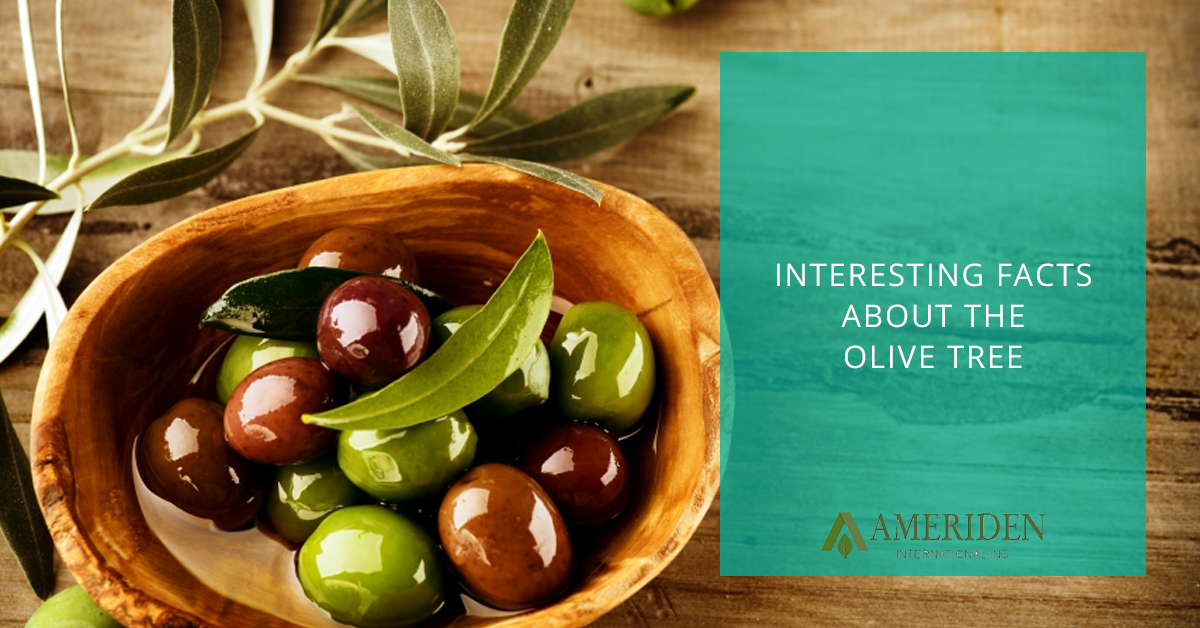Interesting Facts About The Olive Tree
Posted by Ameriden International on 13th Apr 2017

Even if you’ve never eaten an olive, you have most likely eaten food cooked with olive oil. Many sauces and salad dressings use olive oil as a key ingredient. The health benefits of olive oil are so valued that some diets encourage the use of the oil in cooking. Beloved by many cultures alike, the olive tree is unique in its longevity. In fact, this durable tree can live for up to 2000 years. Today, we would like to explore some interesting facts about the olive tree.
The World’s Oldest Olive Tree
The oldest living olive tree known to mankind is located on the island of Crete, and is believed to be as old as 2,000 years old. Despite its advanced age, this hearty tree still produces fruit, so this tree could live for a much longer period of time.
Symbol of Peace
Have you ever heard the term, “extending an olive branch?” This term actually originated in the Bible, in the famous story of Noah’s Ark. In this story, a dove delivers an olive branch to Noah as a sign that the floods are beginning to recede. Olive branches were also believed to be symbols of peace in ancient Greece and Rome as well.
Seven Species of Land
In ancient times, Israel was lauded for seven different foods that it produced: wheat, barley, figs, grapes, pomegranates, date-honey and olive oil. Israelites considered these foods to be extremely valuable for both their health and their trade as well.
Olive Trees Thrive in Less-Than-Ideal Conditions
Olive trees thrive in both poor soil conditions and drought because their roots penetrate deep into the soil, which allows the plants to access damp soil. People believe that olive trees are native to Syria and Israel and thrive in the hot, dry climate of the Mediterranean.
Making Olive Oil
In both ancient times and even in modern times, making olive oil is a laborious and slow task. In ancient times, people crushed olives with a wheel, which created a pulp that was placed in baskets. This pulp was then squeezed into a press, which could take several days to produce olive oil.
Harvesting Olives
Because olives are delicate and easily bruised, they are often harvested by hand. Table olives, which refer to any olives that are meant to be eaten, are harvested in a variety of countries, including Italy, Turkey, Tunisia, Morocco, Portugal, Spain, Greece, and France. You can even find table olives that are harvested in Northern California.
The Process of Making Olives Edible
Olives are naturally extremely bitter, so people utilize a variety of processes in order to transform them into delicious food. Some of the curing processes of olives involve the use of brine, lye, or water. Olives can also be dry cured or sun dried as well. The most common method used to cure olives involves preserving them in brine, which takes six weeks or up to nine months to complete.
Medicinal Uses Today
Not only is olive oil good for you, but olive leaf extract includes a wide variety of health benefits as well. Ancient Greeks used olive oil to treat skin conditions, sore throats, digestive problems, and respiratory ailments. Even today, the properties in olives are both lauded for their healing properties. Olives contain high amounts of oleuropein, which is a powerful antioxidant with great antioxidant properties as well. Not only could olives help fight off colds and viruses, but they also help lower blood pressure and cholesterol levels. If you are looking for an excellent health supplement, try out The Original Olive leaf Extract.


